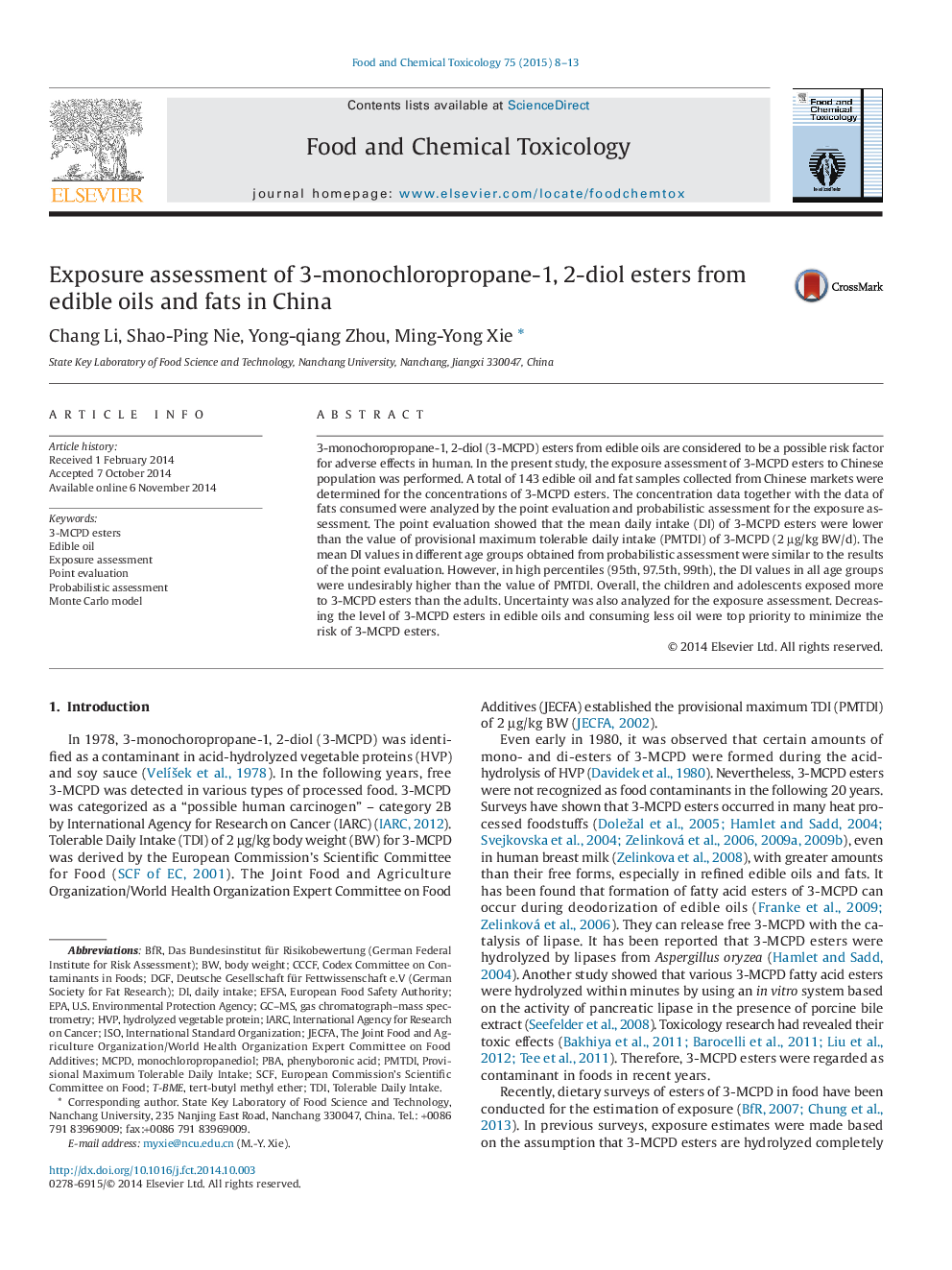| Article ID | Journal | Published Year | Pages | File Type |
|---|---|---|---|---|
| 5849857 | Food and Chemical Toxicology | 2015 | 6 Pages |
Abstract
3-monochoropropane-1, 2-diol (3-MCPD) esters from edible oils are considered to be a possible risk factor for adverse effects in human. In the present study, the exposure assessment of 3-MCPD esters to Chinese population was performed. A total of 143 edible oil and fat samples collected from Chinese markets were determined for the concentrations of 3-MCPD esters. The concentration data together with the data of fats consumed were analyzed by the point evaluation and probabilistic assessment for the exposure assessment. The point evaluation showed that the mean daily intake (DI) of 3-MCPD esters were lower than the value of provisional maximum tolerable daily intake (PMTDI) of 3-MCPD (2âµg/kg BW/d). The mean DI values in different age groups obtained from probabilistic assessment were similar to the results of the point evaluation. However, in high percentiles (95th, 97.5th, 99th), the DI values in all age groups were undesirably higher than the value of PMTDI. Overall, the children and adolescents exposed more to 3-MCPD esters than the adults. Uncertainty was also analyzed for the exposure assessment. Decreasing the level of 3-MCPD esters in edible oils and consuming less oil were top priority to minimize the risk of 3-MCPD esters.
Keywords
BFRHVPGas chromatograph–mass spectrometryMCPDJECFAPBAPMTDIDGFSCFTDIEPA3-MCPD estersEFSAGC–MSInternational Agency for Research on CancerIARC یا International Agency for Research on CancerU.S. Environmental Protection AgencyEuropean Food Safety AuthorityProbabilistic assessmentExposure assessmentISOtert-butyl methyl etherprovisional maximum tolerable daily intakeEdible oilinternational standard organizationMonte Carlo modelDaily intakeTolerable daily intakebody weight
Related Topics
Life Sciences
Agricultural and Biological Sciences
Food Science
Authors
Chang Li, Shao-Ping Nie, Yong-qiang Zhou, Ming-Yong Xie,
